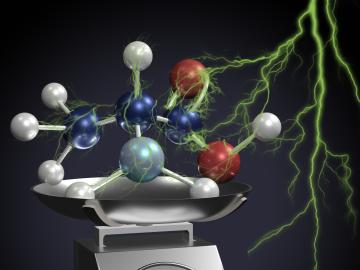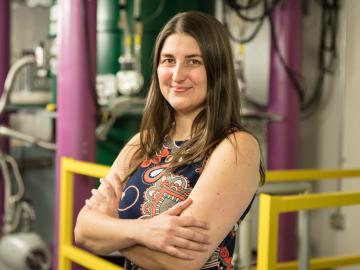
Filter News
Area of Research
- (-) Advanced Manufacturing (2)
- (-) Materials (86)
- (-) Nuclear Science and Technology (21)
- Biological Systems (2)
- Biology and Environment (126)
- Biology and Soft Matter (1)
- Computational Engineering (1)
- Computer Science (2)
- Electricity and Smart Grid (1)
- Energy Science (97)
- Functional Materials for Energy (1)
- Fusion and Fission (29)
- Fusion Energy (17)
- Isotopes (1)
- Materials for Computing (6)
- Mathematics (1)
- National Security (28)
- Neutron Science (26)
- Nuclear Systems Modeling, Simulation and Validation (1)
- Quantum information Science (4)
- Supercomputing (50)
News Topics
- (-) Advanced Reactors (14)
- (-) Bioenergy (12)
- (-) Clean Water (3)
- (-) Cybersecurity (5)
- (-) Environment (16)
- (-) Fusion (15)
- (-) ITER (1)
- (-) Microscopy (27)
- (-) Physics (30)
- 3-D Printing/Advanced Manufacturing (44)
- Artificial Intelligence (10)
- Big Data (2)
- Biology (4)
- Biomedical (8)
- Buildings (5)
- Chemical Sciences (32)
- Composites (12)
- Computer Science (19)
- Coronavirus (5)
- Critical Materials (13)
- Energy Storage (34)
- Exascale Computing (2)
- Frontier (3)
- Grid (5)
- High-Performance Computing (4)
- Irradiation (1)
- Isotopes (16)
- Machine Learning (6)
- Materials (79)
- Materials Science (82)
- Mathematics (1)
- Molten Salt (7)
- Nanotechnology (39)
- National Security (3)
- Neutron Science (40)
- Nuclear Energy (49)
- Partnerships (11)
- Polymers (17)
- Quantum Computing (3)
- Quantum Science (11)
- Security (2)
- Simulation (1)
- Space Exploration (8)
- Summit (2)
- Transportation (14)
Media Contacts

OAK RIDGE, Tenn., Jan. 31, 2019—A new electron microscopy technique that detects the subtle changes in the weight of proteins at the nanoscale—while keeping the sample intact—could open a new pathway for deeper, more comprehensive studies of the basic building blocks of life.

Oak Ridge National Laboratory scientists studying fuel cells as a potential alternative to internal combustion engines used sophisticated electron microscopy to investigate the benefits of replacing high-cost platinum with a lower cost, carbon-nitrogen-manganese-based catalyst.

The Department of Energy’s Oak Ridge National Laboratory is collaborating with industry on six new projects focused on advancing commercial nuclear energy technologies that offer potential improvements to current nuclear reactors and move new reactor designs closer to deployment.

A team of scientists has for the first time measured the elusive weak interaction between protons and neutrons in the nucleus of an atom. They had chosen the simplest nucleus consisting of one neutron and one proton for the study.

Scientists at the Department of Energy’s Oak Ridge National Laboratory have created a recipe for a renewable 3D printing feedstock that could spur a profitable new use for an intractable biorefinery byproduct: lignin.

Leah Broussard, a physicist at the Department of Energy’s Oak Ridge National Laboratory, has so much fun exploring the neutron that she alternates between calling it her “laboratory” and “playground” for understanding the universe. “The neutron is special,” she said of the sub...
Physicists turned to the “doubly magic” tin isotope Sn-132, colliding it with a target at Oak Ridge National Laboratory to assess its properties as it lost a neutron to become Sn-131.

Three researchers from the Department of Energy’s Oak Ridge National Laboratory have been elected fellows of the American Physical Society (APS). Fellows of the APS are recognized for their exceptional contributions to the physics enterprise in outstanding resear...

An Oak Ridge National Laboratory-led team used a scanning transmission electron microscope to selectively position single atoms below a crystal’s surface for the first time.

Sergei Kalinin of the Department of Energy’s Oak Ridge National Laboratory knows that seeing something is not the same as understanding it. As director of ORNL’s Institute for Functional Imaging of Materials, he convenes experts in microscopy and computing to gain scientific insigh...


